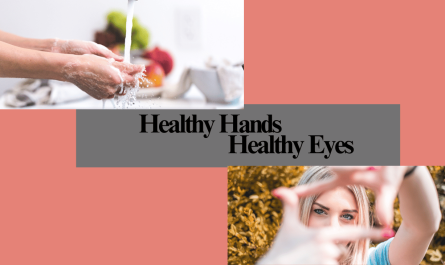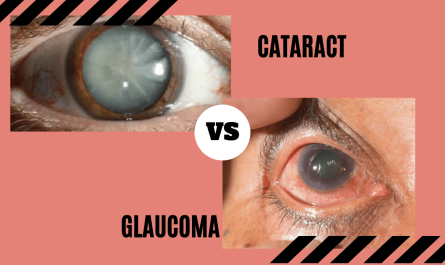Hypermetropia, commonly known as farsightedness, is a refractive error where distant objects are seen more clearly than nearby objects. This eye condition affects a significant portion of the population, making it essential to understand its causes, symptoms, and the various treatment options available.This blog will provide a comprehensive overview of hypermetropia, its effects, and how to manage it, whether you’re experiencing blurry vision up close or just curious about eye health.
In this blog, we will delve into the basics of hypermetropia, its causes and symptoms, explore the treatment options available, and offer some expert tips on maintaining good eye health. If you’ve been struggling with blurred vision or want to know more about eye care, keep reading!
What is Hypermetropia?
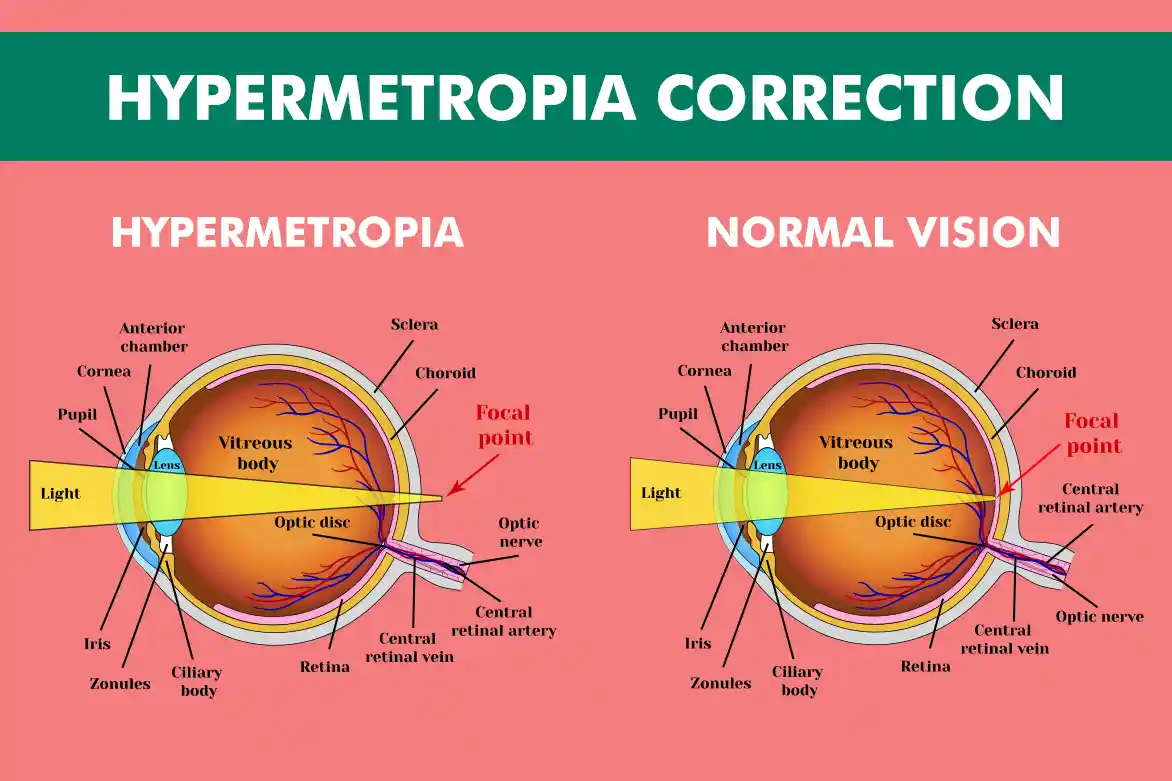
Hypermetropia, also referred to as farsightedness, occurs when the eye is shorter than normal or when the cornea has too little curvature. This leads to light entering the eye in a way that focuses behind the retina instead of directly on it. As a result, the eye sees close objects as blurry but distant objects more clearly.
In a healthy eye, light rays focus directly on the retina at the back of the eye, providing a clear image. However, in a hypermetropic eye, the light focuses behind the retina, causing difficulty in seeing near objects clearly. An ophthalmologist or optometrist can diagnose hypermetropia through a routine eye examination.
Causes and Symptoms of Hypermetropia
Causes
Hypermetropia can be caused by several factors, including:
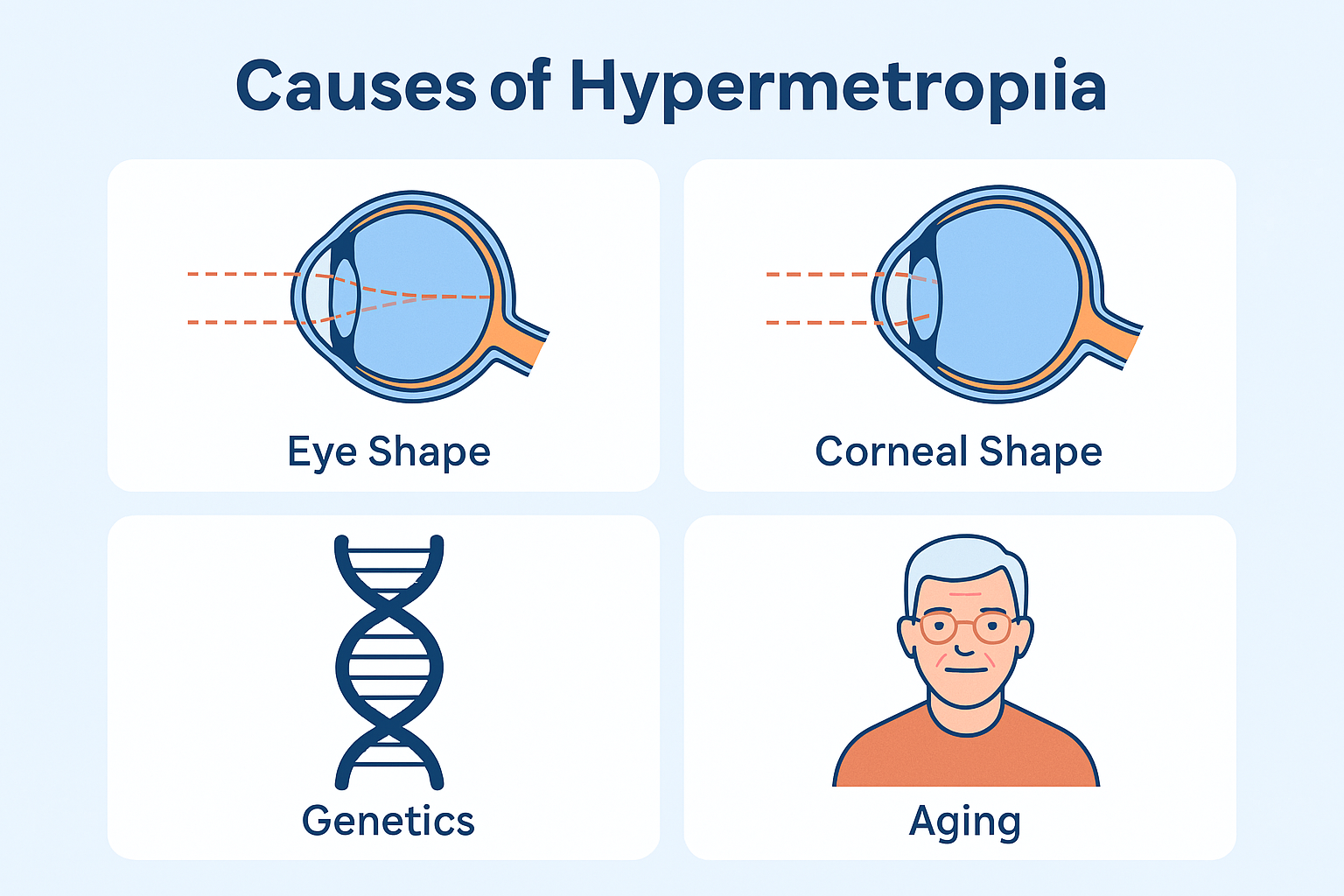
- Eye Shape: As mentioned earlier, hypermetropia often occurs due to the eyeball being too short, causing light to focus behind the retina.
- Corneal Shape: A cornea that is too flat may also lead to this condition. The cornea’s curvature plays a vital role in focusing light correctly on the retina.
- Genetics: Farsightedness can run in families, meaning that if your parents had hypermetropia, you may also be more likely to develop it.
- Aging: As we age, the lens of the eye becomes less flexible, leading to a loss of accommodation. This can contribute to presbyopia, which is a condition related to hypermetropia, often noticed after the age of 40.
Symptoms
Common symptoms of hypermetropia include:

- Blurry Vision Up Close: The most noticeable symptom of hypermetropia is difficulty focusing on nearby objects, such as reading or working on a computer.
- Eye Strain and Headaches: Farsighted individuals may experience eye strain, especially after reading or doing tasks that require close vision, leading to headaches.
- Tired Eyes: Constantly straining to focus on nearby objects can cause your eyes to feel fatigued or tired.
- Difficulty with Near Vision Tasks: Activities such as sewing, using a smartphone, or reading small print become challenging due to blurred vision up close.
- Squinting: To improve focus on near objects, individuals with hypermetropia may squint, which can lead to eye discomfort.
If you experience any of these symptoms, it’s important to get your eyes checked by a professional to ensure proper diagnosis and treatment.
Treatment Options for Hypermetropia
The good news is that hypermetropia can be corrected through a variety of treatment options. The most common solutions include:
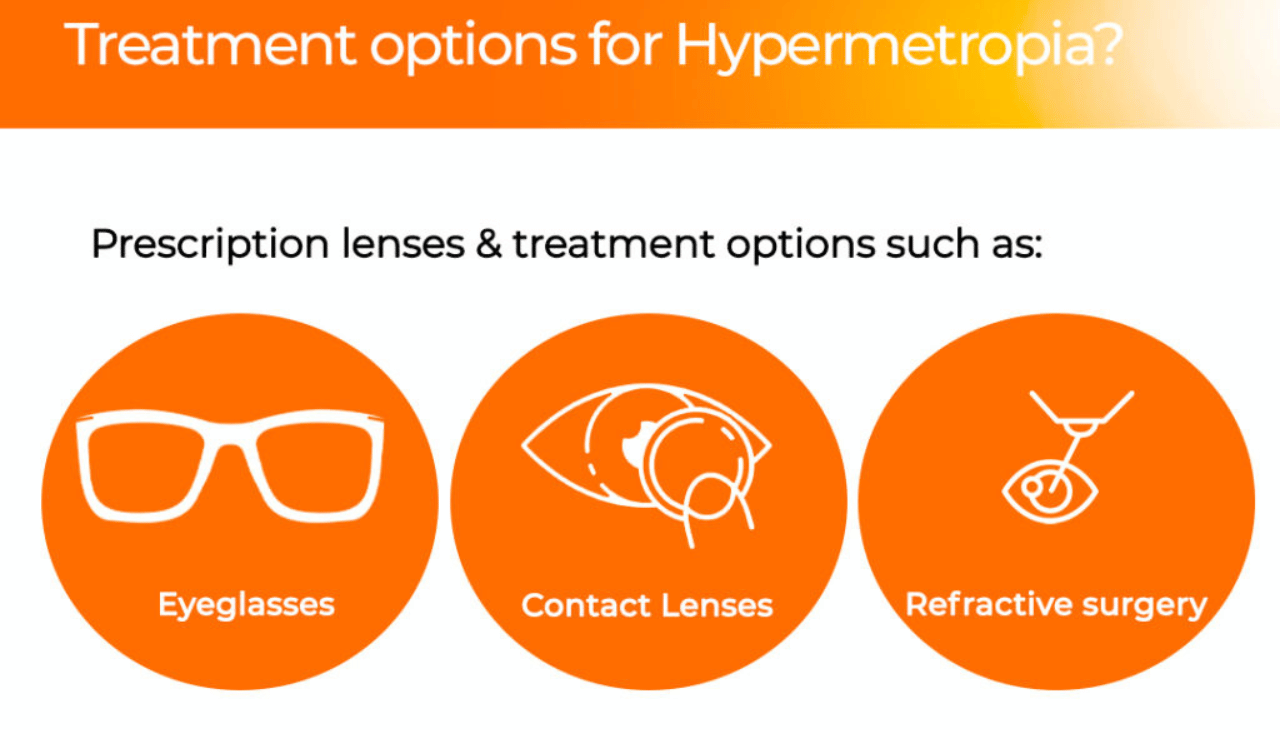
- Eyeglasses: Wearing corrective glasses is one of the simplest ways to correct hypermetropia. The glasses contain lenses that help focus light on the retina, enabling you to see clearly at all distances.
- Contact Lenses: For those who prefer not to wear glasses, contact lenses are an effective alternative. These lenses sit directly on the eye and help focus light correctly on the retina.
- Refractive Surgery: Laser eye surgery, such as LASIK (Laser-Assisted in Situ Keratomileusis), is a popular surgical option for permanent correction of hypermetropia. During LASIK, surgeons reshape the cornea to focus light directly onto the retina. Other advanced surgeries, such as Contoura Vision LASIK, provide more customized results.
- Intraocular Lenses (IOLs): For those with higher degrees of hypermetropia or individuals who are not candidates for LASIK, doctors may recommend IOLs. Surgeons surgically implant these lenses into the eye to correct vision.
- Presbyopia Management: If you’re over the age of 40 and also experience presbyopia, which affects near vision due to aging, treatments such as multifocal glasses or surgery can help. These treatments address both hypermetropia and presbyopia, allowing clearer vision at all distances.
Advanced Laser Vision Correction: Presbyond
How Presbyond Works
Presbyond is an advanced laser vision correction technique designed to treat presbyopia, a condition that typically occurs with aging and affects the ability to see nearby objects clearly. It is a specialized procedure, primarily used for patients who are suffering from both hypermetropia (farsightedness) and presbyopia (age-related near vision loss). Unlike traditional laser treatments, Presbyond uses cutting-edge technology to correct vision at multiple distances, making it an ideal choice for individuals looking to reduce or eliminate their dependence on reading glasses.
Here’s how Presbyond works:
- Customized Laser Treatment: The procedure involves using an excimer laser to reshape the cornea of the eye. The laser treatment is tailored to each patient’s specific needs based on the degree of hypermetropia and presbyopia. Unlike traditional treatments, which only correct distance vision, Presbyond helps create multiple focal points for near, intermediate, and distant vision.
- Pupil Centering and Treatment Precision: One of the key elements of Presbyond is its ability to target the center of the pupil precisely. This ensures that the laser treatment addresses both distance and near vision simultaneously, reducing the need for reading glasses.
- Blended Vision Concept: Presbyond works on the concept of blended vision, where the laser treatment creates a smooth transition between different focal points. The result is improved near vision, while still maintaining the clarity of distance vision.
- Quick Recovery: Since PresbyOND is a minimally invasive laser procedure, most patients experience improved vision in a matter of days, with shorter recovery times compared to other surgical options.
Benefits of Presbyond for Hypermetropia
Presbyond is an ideal solution for individuals suffering from both hypermetropia and presbyopia. Here are some of the key benefits:
- Improved Near and Distance Vision: Presbyond addresses both hypermetropia and presbyopia, allowing patients to see clearly at all distances without the need for corrective lenses. Patients often experience a significant reduction in their dependency on reading glasses and bifocals.
- No Need for Glasses or Contact Lenses: By correcting both near and far vision, Presbyond provides patients with the freedom of no longer relying on glasses or contact lenses. This enhances convenience and quality of life, especially for individuals who engage in activities like reading, driving, or using electronic devices.
- Permanent Solution: Unlike reading glasses, which patients need to wear continuously and replace over time, Presbyond offers a permanent solution to hypermetropia and presbyopia. Once doctors perform the procedure, patients can enjoy lasting benefits and improved vision for many years.
- Minimal Side Effects: As a laser-based treatment, Presbyond is generally considered safe with minimal side effects. Most patients experience slight dryness or glare, which typically subsides within a few weeks.
- Quick Recovery Time: Presbyond has a fast recovery time compared to traditional eye surgeries, and most patients can return to their daily activities in just a few days. The procedure is non-invasive, and healing time is minimal.
Expert Recommendations and Additional Insights
While corrective lenses and surgery are effective treatments for hypermetropia, maintaining healthy eyes is equally important. Here are some expert tips for eye care:
- Regular Eye Exams: Regular check-ups with an eye care professional ensure early detection of hypermetropia and other potential eye conditions. Early intervention can prevent vision problems from worsening.
- Proper Lighting: When reading or working on tasks that require close vision, make sure you have adequate lighting to reduce eye strain.
- Take Breaks: If you spend long hours in front of a screen, remember to follow the 20-20-20 rule: every 20 minutes, look at something 20 feet away for at least 20 seconds to rest your eyes.
- Healthy Diet: Eating a balanced diet rich in vitamins A, C, and E, as well as omega-3 fatty acids, can help maintain healthy eyes and prevent vision problems.
If you’re considering treatment options for hypermetropia, it’s essential to consult an experienced eye care specialist who can guide you toward the best solution for your needs.
Consultation at Laxmi Eye Hospital
Laxmi Eye Hospital is one of the largest and most trusted eye care chains in Mumbai, known for over 30 years of excellence in the field. The hospital’s team of highly experienced ophthalmologists specializes in various treatments, including LASIK (Bladeless LASIK, ICL, IPCL, Contoura Vision LASIK), Cataract, Glaucoma, Retina Treatments, and Pediatric Ophthalmology.
With state-of-the-art facilities and a commitment to transparency, Laxmi Eye Hospital provides the highest level of care at an affordable cost. Whether you’re considering LASIK, need cataract surgery, or require specialized retina treatment, Laxmi Eye Hospital offers comprehensive services in Panvel, Kharghar, Kamothe, and Dombivli. Visit Laxmi Eye Hospital for world-class care and expertise in hypermetropia treatment.
Locations for Consultation:
- Laxmi Eye Clinic (Dombivli): 1st Floor, Laxmi Eye Institute, SS Business Park, Dombivli East, Mumbai, Maharashtra 421201
- Laxmi Eye Clinic (Kharghar): Office 108-110, 1st Floor, Anant CHS, Kharghar, Navi Mumbai, Maharashtra 410210
- Laxmi Eye Hospital (Panvel): Mulla Hamid Rd, Old Panvel, Navi Mumbai, Maharashtra 410206
- Laxmi Eye Institute (Kamothe): Shop No 26/27, Kamothe, Navi Mumbai, Maharashtra 410209
Book your consultation today to begin your journey toward clearer vision!
FAQs about Hypermetropia
- What is the difference between hypermetropia and myopia?
- Hypermetropia (farsightedness) is when distant objects are clear, but nearby objects are blurry, whereas myopia (nearsightedness) is when nearby objects are clear, but distant objects are blurry.
- Hypermetropia (farsightedness) is when distant objects are clear, but nearby objects are blurry, whereas myopia (nearsightedness) is when nearby objects are clear, but distant objects are blurry.
- Can hypermetropia be prevented?
- While hypermetropia is often genetic, regular eye check-ups and maintaining good eye care habits can help manage the condition early.
- While hypermetropia is often genetic, regular eye check-ups and maintaining good eye care habits can help manage the condition early.
- Can children have hypermetropia?
- Yes, children can have hypermetropia, and it’s important to get their vision checked regularly for early diagnosis.
- Yes, children can have hypermetropia, and it’s important to get their vision checked regularly for early diagnosis.
- How do I know if I have hypermetropia?
- Common signs include blurry vision when reading, eye strain, and headaches. An eye exam by an ophthalmologist can confirm the diagnosis.
- Common signs include blurry vision when reading, eye strain, and headaches. An eye exam by an ophthalmologist can confirm the diagnosis.
- Is LASIK a permanent solution for hypermetropia?
- Yes, LASIK is a permanent solution, but as you age, you may experience changes in your vision.
- Yes, LASIK is a permanent solution, but as you age, you may experience changes in your vision.
Conclusion
Hypermetropia is a common refractive error that can significantly impact one’s ability to see clearly up close. However, with modern treatments such as eyeglasses, contact lenses, and LASIK surgery, the condition is highly manageable. If you suspect you have hypermetropia or are experiencing symptoms, it’s crucial to consult with an eye care professional for proper diagnosis and treatment. Don’t let vision problems affect your daily life—seek the right treatment to regain clear, comfortable vision.


